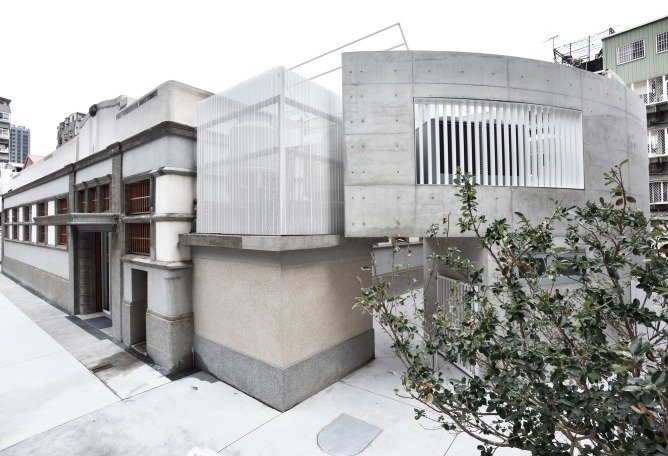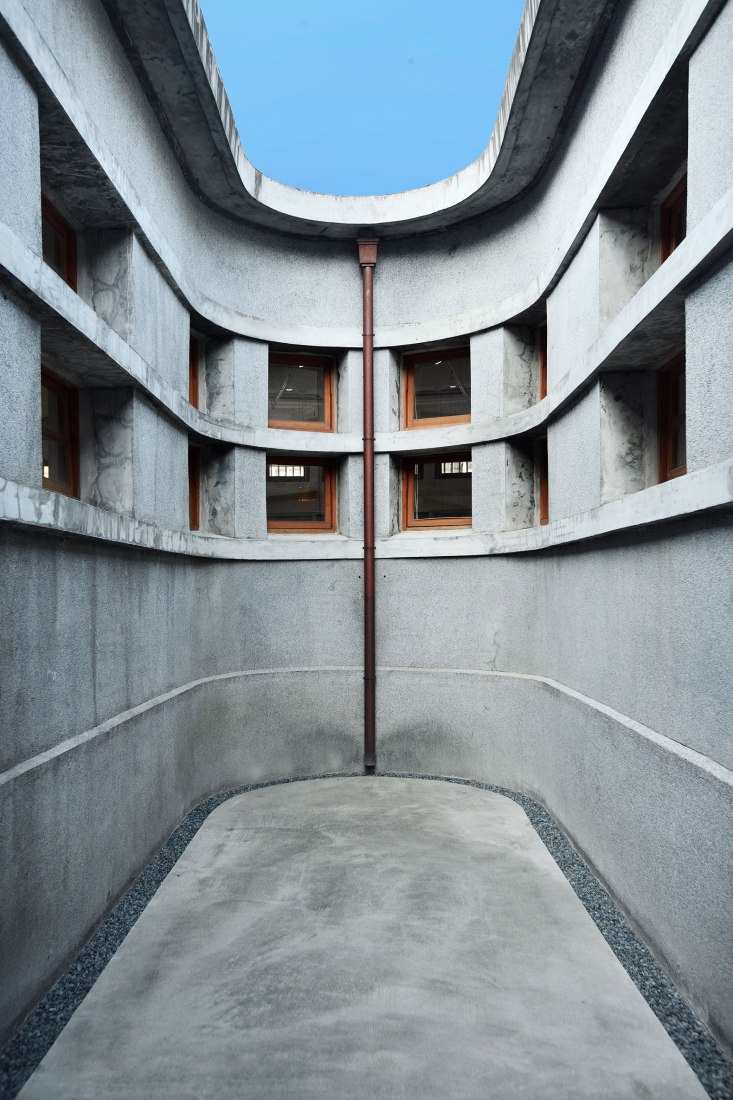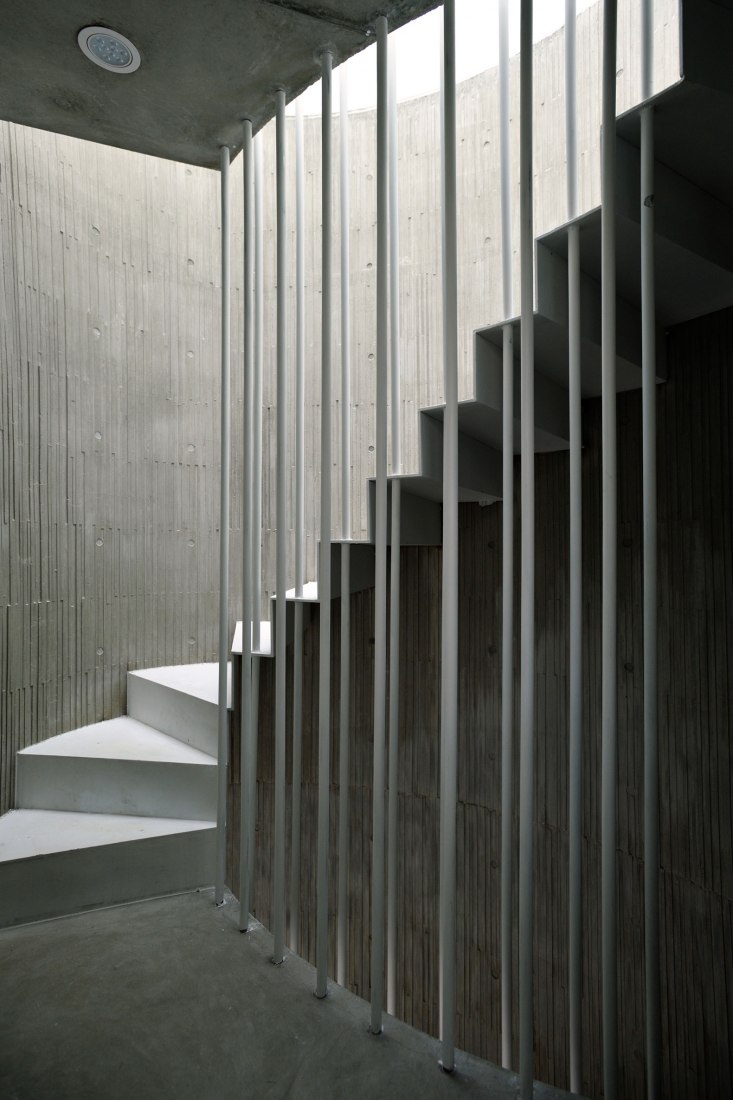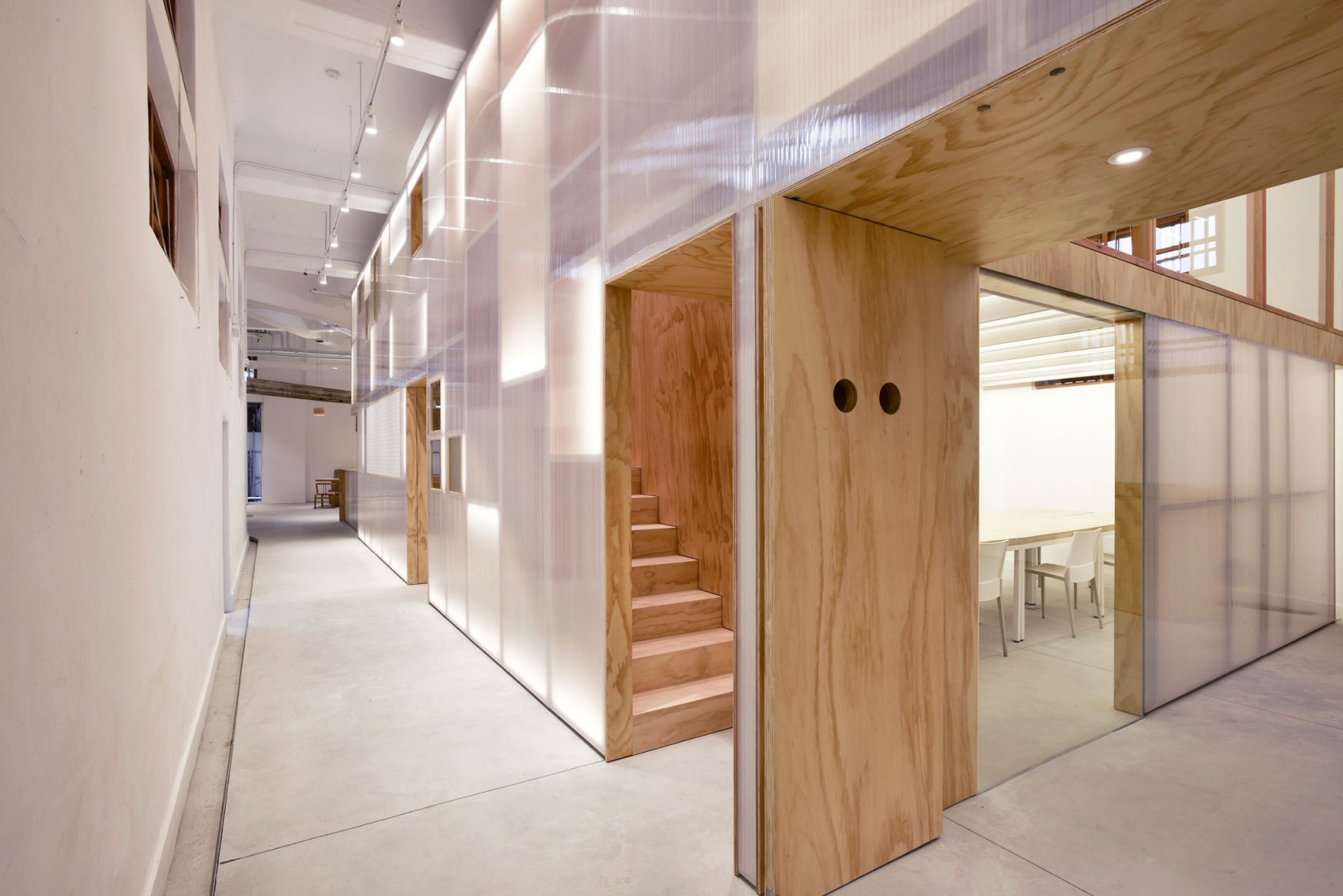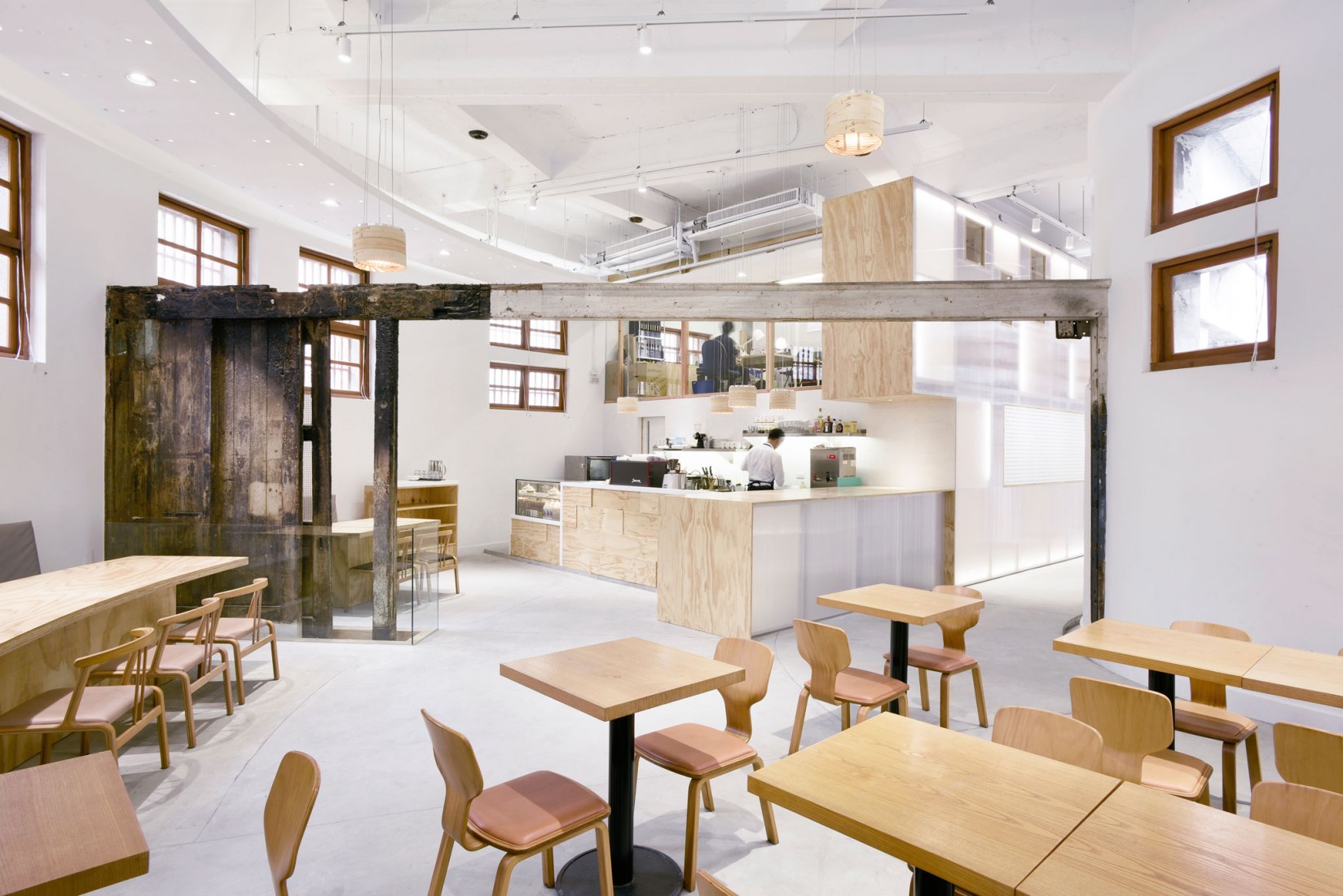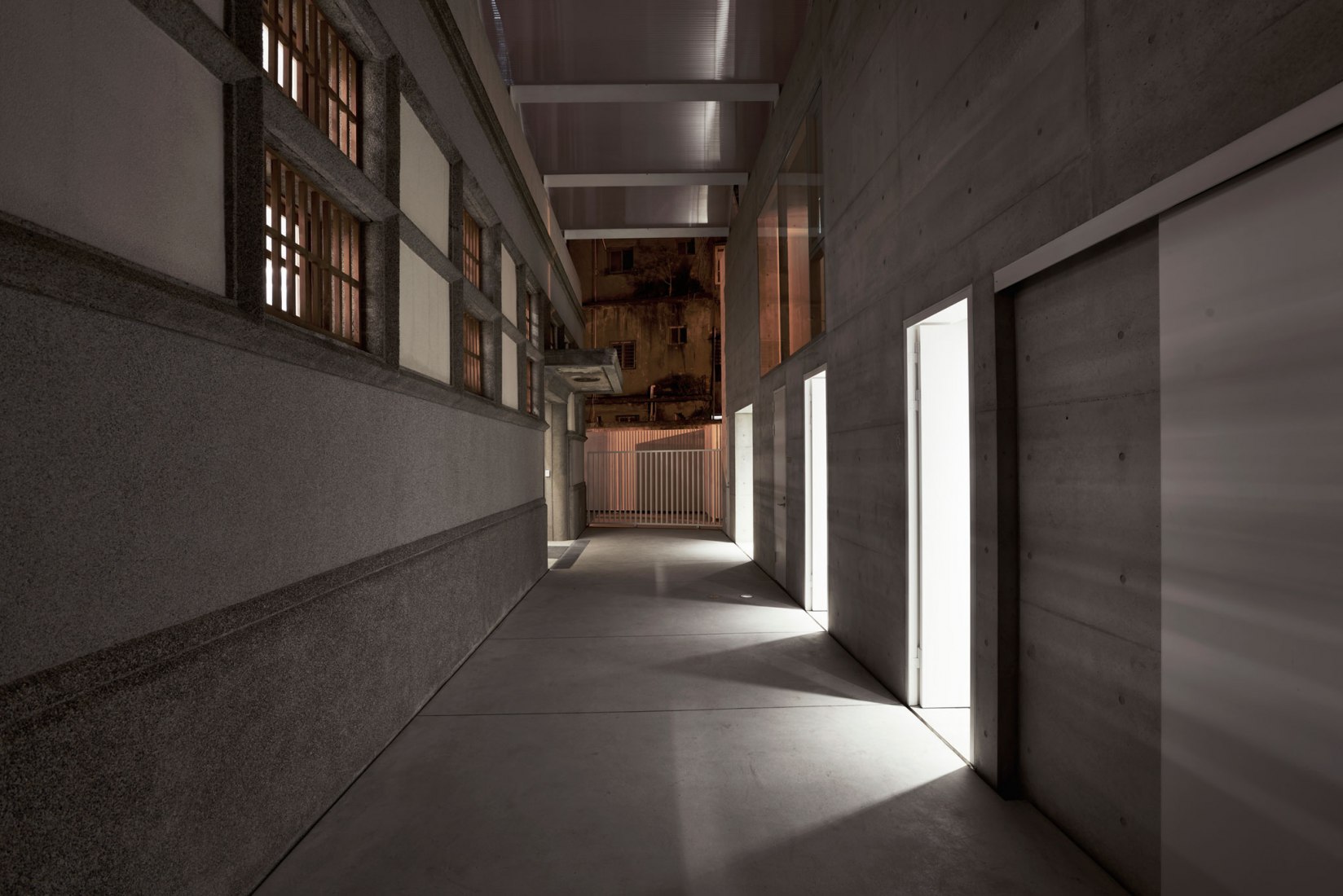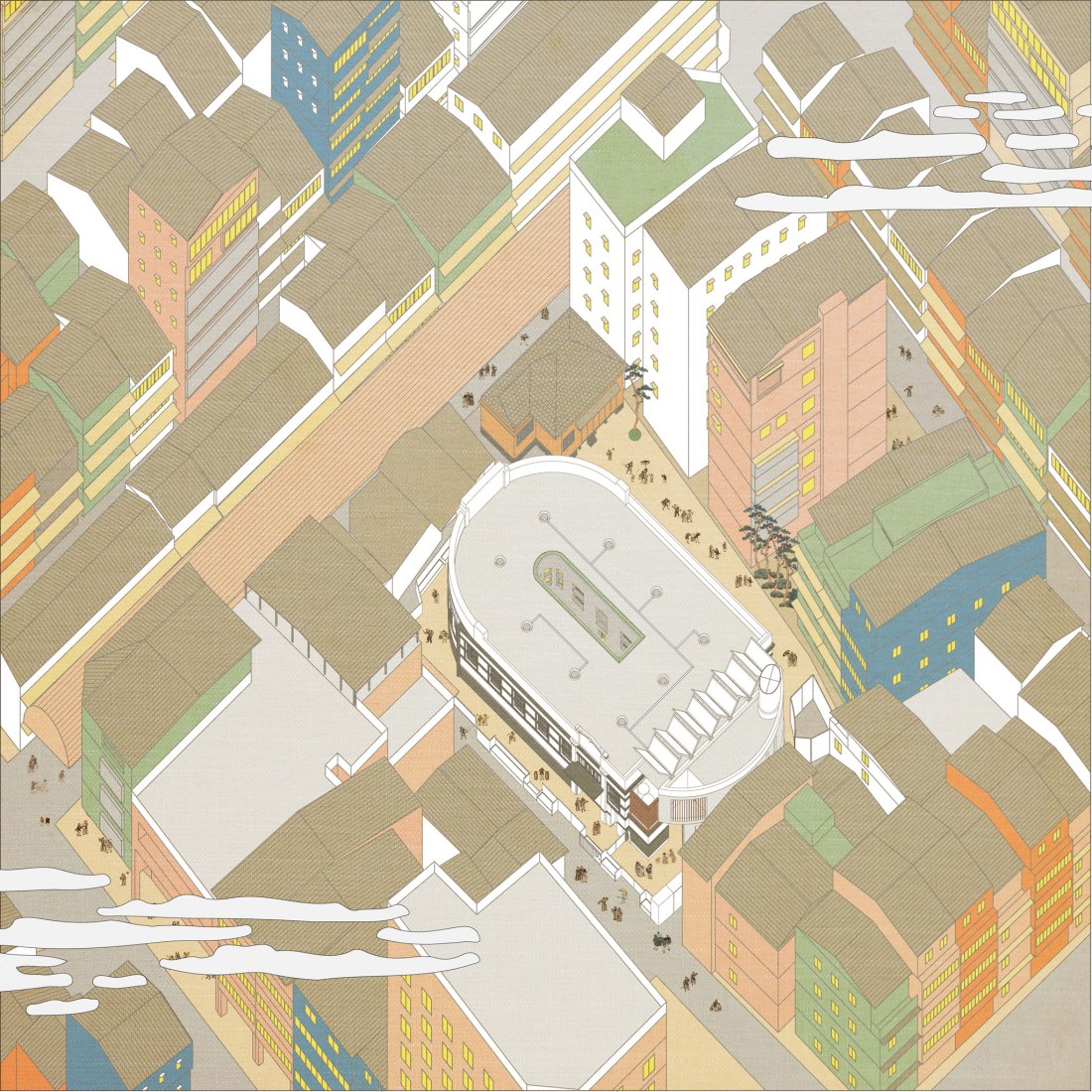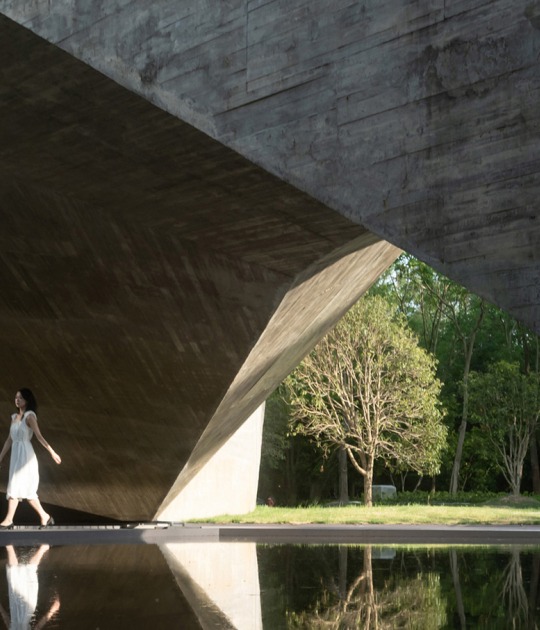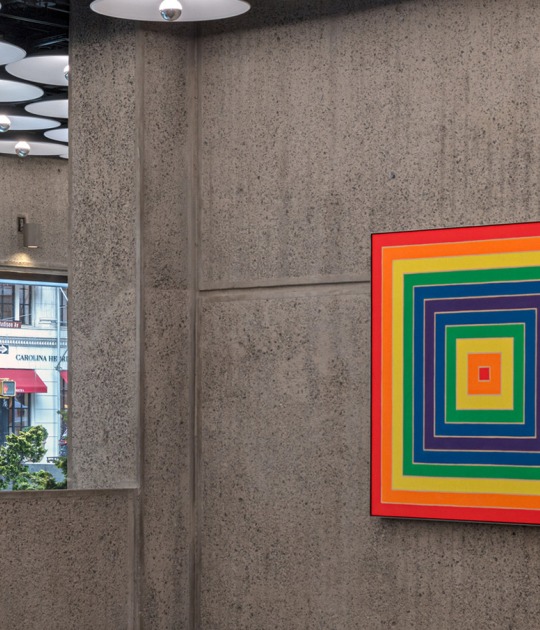The renovation of this small project is designed with careful and delicate attention to detail, a treatment that must be respectful and must not destroy or modify the existing building, taking into account the idea of a shared and temporary space, given that users will have a rental for 10 years. The duality between the permanent and the new, such as the volume of the public toilet, and the program of office space housed in the old one, which will only be temporary.
With this idea of permanence and transience, the materials pay attention to that same duality, highlighting the interior wall made with a wooden structure and covered with a translucent polycarbonate board. In the public toilet, in-situ concrete is the main material, with a texture of boards and colour that dialogue with the old building and enrich it with a fragile look.

U-Market by Behet Bondzio Lin Architekten. Photograph by Te-Fan Wang.

U-Market by Behet Bondzio Lin Architekten. Photograph by Te-Fan Wang.
Description of project by Behet Bondzio Lin Architekten
Taipei historic Hsin-Fu market renovation.
Regarding the preservation of the historic Hsin Fu market, the project aims to arrive at an understanding of its existence through the building design and its physical condition.
The Hsin Fu market built in 1935 in the Wanhua district, the oldest district of Taipei, was designed based on form following function. The horseshoe plan provides a loggia space like the ones found in the typology of public plazas where traditional markets used to be set up. From its original design, the HsinFu market is strikingly different from the traditional market, usually more permeable.
Hygiene was a key point in the design of the space section. The 3 meters tall atrium void and stacked windows provide the required light and ventilation for the market. The interior plan consists of two slightly elevated stalls and comfortable walking space. Inside the market there were more than 30 stands, vendors and customers were Taiwanese and Japanese, and thus the products and the life of the market were a well-blended representation of the society at the time.

U-Market by Behet Bondzio Lin Architekten. Photograph by Te-Fan Wang
The new design calls for ephemeralness, reflecting the temporal timeline (10 years rental period) and the inconsistent user situation (co-sharing office space). It also needs to respond to the mixing of public and private space, as well as address the issue of implementing new building equipment without destroying or modifying the existing building condition.
The design is divided into 2 parts: the co-sharing office space within the original building and the new public toilet. In terms of massing, the new design preserved the U shape from the original design and generates an open volume between the old and the new massing. This covered, semi-outdoor alley will serve as a mediating space providing contrast between the two massings. Interestingly, the use of the new massing as a public toilet will last longer when compared to the office space program hosted in the old one which will be only temporary. Therefore cast-in-place concrete is chosen as the primary material, mimicking the colour of the granolithic exterior of the old building.
The old building’s program includes a co-share office, cooking Aula lecture room, exhibition space, meeting room, and café. Due to the ephemeral character of the intervention, we chose larch plywood, typically used as fixture backing, to build a 1.2-meter thick wall that houses all necessary mechanical equipment, storage, vertical circulation, and projecting equipment. The thick wall is covered with translucent polycarbonate board glued directly onto the wood frame like the outdoor market vendors. The translucency defines a public and private partition; offers a thickness that is both transparent and contextual. Depending on the use, this thickness is both partition and space. It emphasizes the atrium presence, transforming what used to be the void of the building into solid. Meanwhile, this thick wall also becomes a circular exhibition hallway, mediating between the old and the new in an attempt to provoke curiosity. This dialogue provides a platform for one to re-understand the importance and duty of this historical building at the current time.


